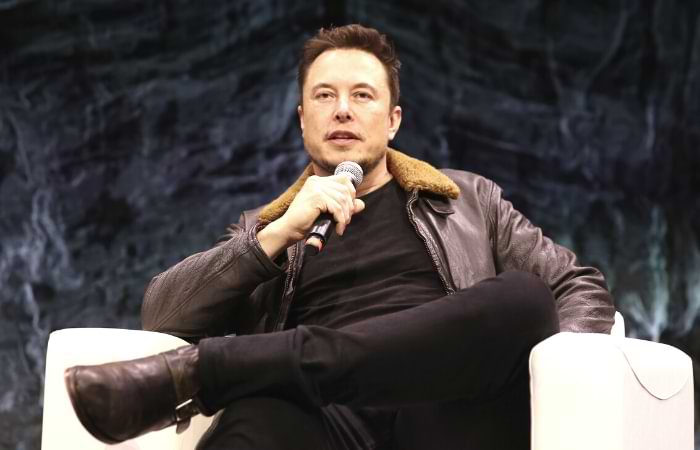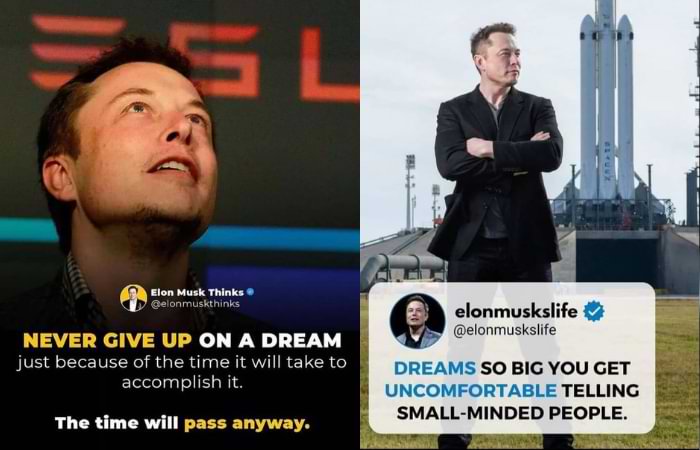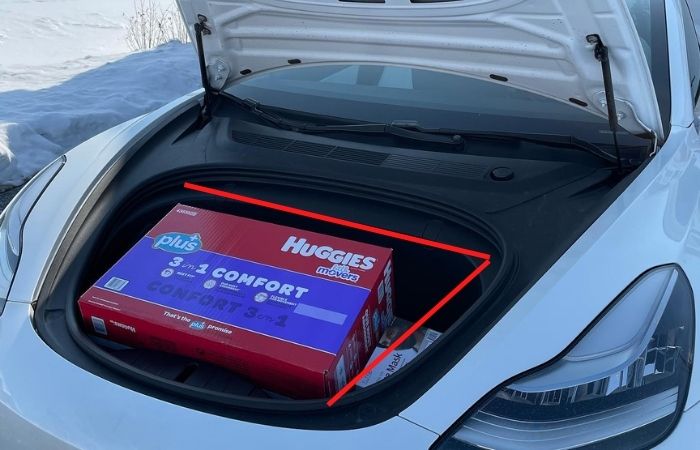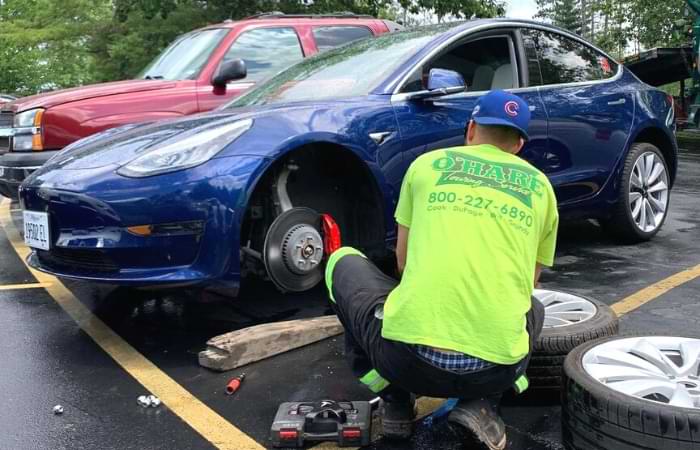Why don’t Tesla cars have an engine?
We use affiliate links and may receive a small commission on purchases. Read more about us.
Tesla cars do not have engines because an engine runs on combustion fuel, whereas Tesla runs on electricity.
Instead of an engine, Tesla EVs have motors that generate power to run the wheels and other parts of the vehicle.
A motor may look similar to an engine, but the functionality of a motor and an engine are a little different.
If you are wondering how Tesla electric car runs without an engine, you are in the right place.
Let’s learn about why Tesla electric cars do not have engines and how do they operate without an engine-


What are the differences between an engine and a motor?
While an engine generates its own power, a motor receives the energy from electric batteries to transfer dynamic torque to different parts of a machine.
An engine completes the transmission in multiple strokes, whereas a motor is a device that can immediately transfer the torque received from the battery to the wheels.
Therefore, a motor is a single-speed transmission device.
Because of the motor, an electric car is more capable of delivering better speed and less sound compared to an engine-powered vehicle.
As the engine needs to complete the transmission process in multiple steps, it is mostly slow and generates comparatively more sound.


Why don't Tesla cars have an engine?
Tesla brings completely futuristic vehicles to the market. Fossil fuels are limited, and finding an alternative is becoming a necessity.
That is what Tesla is doing here. Unlike hybrid electric vehicles, Tesla EVs are completely electric.
As a result, Tesla cars do not have any engines.
Engines are the primary organ of all hydraulic fuel-powered vehicles.
Instead of generating the energy, Tesla uses a rechargeable battery that transfers energy to the motor so that the motor can run the wheels and all other moving parts.
At the same time, monitoring all the software and technical properties of the vehicle is nicely done through electricity.
How do Tesla Electric Vehicles work?
In the simplistic term, the induction motor placed inside of the vehicle collects power directly from the battery.
An inverter placed inside of the motor transforms that direct current into a more powerful alternating current to rapidly move the wheels.
This whole process happens at a far higher speed compared to hydraulic engines.
Being a one-cycle system, the whole process does not generate higher noise as well.
Anyway, if the battery inside of the vehicle stops generating power, the whole system will be useless.
As a result, a connector needs to attach to charge the battery so that the motor can receive a relentless power supply.
Yes, like a hydraulic vehicle, Tesla cars do have a drive train. But this time it is a single-speed transmission system.


What are the parts of a Tesla car?
Every Tesla car has a unique design. But the functional property of every model is kind of the same. Here are some of the primary elements you would inside of every Tesla electric car-
Battery pack
To generate the required power, every Tesla all-electric vehicle will have a large battery pack. Most Tesla electric cars have Li-ion batteries. Tesla is looking for more economical but powerful options in near future.
To learn more about batteries, you may check this blog post.
Charge port and charger
For a relentless power supply, juicing up the battery is pretty much necessary.
With every Tesla, there comes a charge port and a charger so that you can charge the vehicle with ease.
Converter
Only generating power won’t suffice to move the vehicle. A converter needs to transform the low power to a higher voltage so that the vehicle can move at a fast rate.
A DC/DC converter placed inside of the vehicle does the job.
Electric motor
This is our topic of discussion. Instead of an engine, all-electric vehicles have an electric traction motor that transforms the electric power into mechanical force to run the vehicle.
Controller
Only moving the wheels will not do the job. There needs to have some element that can control the movement of the vehicle.
A power electric controller can control the motor and torque production so that one can control the speed of the vehicle appropriately.
Software for navigation
Yes, Tesla electric cars are intelligent. Some highly intelligent software installed on the vehicle helps the user to navigate the vehicle properly.
Others
Besides, a thermal system allows the vehicle to stay neutral even if the outside environment is extreme.
At the same time, an electric transmission system will also be there to make a controlled movement.
Are Tesla cars hybrid?
No, Tesla EVs are all-electric. Tesla cars do not have any hydraulic engines.
A hybrid car means having an electric system and a hydraulic system simultaneously.
Many popular car manufacturers including Nissan, Hyundai, BMW, etcetera are bringing hybrid electric vehicles to the market for a long time.
But Tesla is the only manufacturer that brings only all-electric vehicles to the market.
Therefore, there is no way one can say that Tesla cars are hybrid.
Engine-powered car vs. electric car
Indeed, electric cars are expensive. But multiple benefits are there that you can expect to get out of an electric car.
Therefore, we are here to make a comparison between hydraulic cars and electric cars so that you can understand why electric cars are superior-
Category | Hydraulic cars | Electric cars |
Price | Cheaper to expensive | Most are expensive |
Noise | Higher | Lower |
Speed | faster | Fastest |
Carbon emission | Higher | Zero |
Environment friendly | No | Yes |
Maintenance | Higher maintenance | Lower maintenance |
Upgrade | Hard to upgrade | Easily upgradable |
Mileage | Shorter mileage | Longer mileage |
As you can see on the chart that the only drawback of having an electric car is that they are expensive.
Other than that, you will get a lot of wholesome features out of an electric car that will make the investment worth it.
Problems with engine powered cars
Engine-powered hydraulic vehicles are the predecessors of modern electric vehicles. But time has shifted to an advanced era where our predecessors hardly can compete with electric cars.
Here are the top five problems of having an engine-powered car-
First of all, the speed of a hydraulic vehicle is limited to a certain parameter. Once you reach that speed, there is no way you can overturn that speed limit.
Second of all, hydraulic vehicles demand regular maintenance, making them a costly investment in the long run.
Most noticeably, hydraulic vehicles emit harmful chemicals to the environment after completing every transmission cycle. These vehicles are one of the main reasons why nature is facing harsh conditions every day.
Again, fueling is always a problem for every engine-powered car. But there is no such thing one has to do with an electric car. Charge the car overnight and you are ready to go.
Last, engine-powered cars are not cost-efficient.
What are the benefits of having an electric system?
Unlike engine-powered cars, electric vehicles are fuel-efficient.
On most occasions, charging an electric vehicle from a public charging station is free. Some stations do demand a certain amount, but that amount will always be cheaper compared to gas in terms of mileage.
Besides, the lower electricity bill will always keep the budget in check even if you charge your electric car at home.
At the same time, the fastest transmission system will always allow you to reach your limit on most occasions.
Finally, the dynamicity of the system will give you a new experience if you have never driven an electric car.


Can an electric motor on a Tesla car provide longer mileage?
Recently a tweet posted from Tesla claims that the Model 3 drive system has been validated to drive over 1 million miles.
If 1 million miles seems huge to you, the electric motor on Tesla cars indeed provides longer mileage.
About two hours of rapid charging on a level 2 public charging station will allow a user to drive 150 miles with ease.
Getting a longer mileage with a lower maintenance cost is one of the primary reasons why Tesla electric cars are booming in the industry.
Electric cars are the future
We don't know yet for how long Tesla will remain on the top chart. A newcomer may take that place in the near future.
But we can assure you that whoever takes that place will be electric.
The limited stock of fossil fuels is driving all car manufacturers to look for an alternative. Tesla has seen the future earlier. But strong competitors are coming to bring an electrifying automotive industry in near future.
If that really happens, the future will look intriguing.
The electric induction motor placed in every Tesla car is bringing revolutionary speed and mileage that was unimaginable before.
We better hope that the industry will develop further to introduce us to more exciting features.








